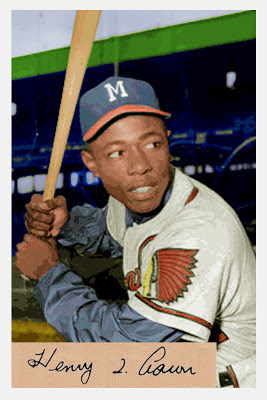I didn't really have Berry on my to-do list for the set, but when I found a great posed action photo of him on the internet, I decided to give it a go.
Actually, if you had asked me a week ago where Berry played college ball, I couldn't have told you. He played a year of junior college football at Schreiner College in Kerrville, Texas, then transferred to Southern Methodist.
Since the Mustangs were a run-oriented offense, Berry didn't get many touches, but as a senior he averaged 15.5 yards per catch.
Back when the NFL allowed teams to draft future selections, the Baltimore Colts picked Berry in the 20th round (#253 overall) of the 1954 draft. He elected to use his final year of eligibility at SMU and reported to the Colts for 1955. He played his entire NFL career with Baltimore, retiring after the 1967 season.
Berry was not fast, but he had the ability to develop patterns and run them to perfection. And he was sure handed. One internet site says he dropped only passes in his 13-year career with the Colts; another says he fumbled only once.
When Johnny Unitas took over as Baltimore's quarterback in 1957, he teamed with Berry as one of the most effective passer-receiver combinations in NFL history.
In Berry's three All-Pro seasons (1958-60) he led the NFL in receiving yards twice, in pass catches three times, in receiving touchdowns twice and yards per game twice.
 He was instrumental in the Colts overtime win over the Giants in the 1958 NFL Championship Game, setting records with 12 receptions and 178 yards, plus a touchdown. He receptions in clutch situations during Baltimore's drives to tie the score, and eventually win the game played out as an unprecedented TV audience watched "The Greatest Game Ever Played."
He was instrumental in the Colts overtime win over the Giants in the 1958 NFL Championship Game, setting records with 12 receptions and 178 yards, plus a touchdown. He receptions in clutch situations during Baltimore's drives to tie the score, and eventually win the game played out as an unprecedented TV audience watched "The Greatest Game Ever Played."This is my second Raymond Berry custom card. Several years ago I made a 1955 Bowman-style card, "predating" his actual Topps rookie card by two years. Who knows, someday I may do a 1956-style.




























